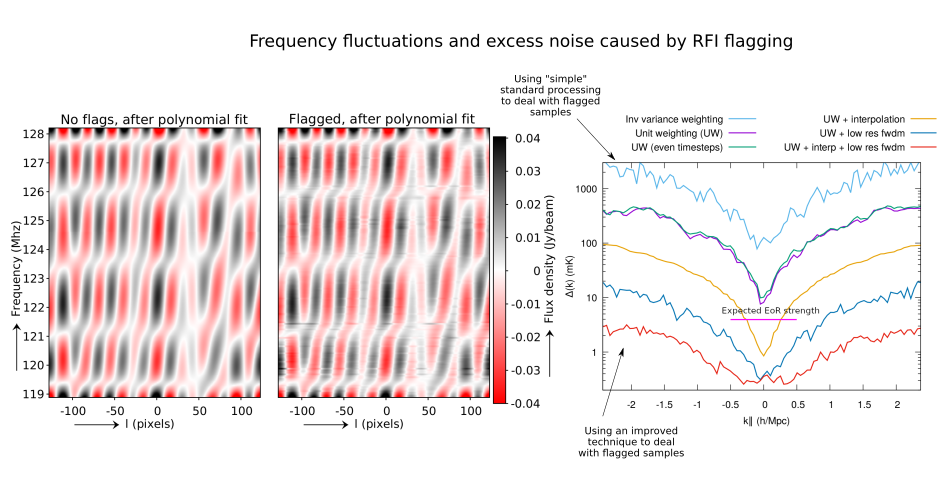Daily Image
29-07-2019Impact of interference on 21-cm EoR analyses
| Submitter: | André Offringa |
| Description: | Using the LOFAR telescope to detect 21-cm signals from neutral Hydrogen in the very early Universe (z=6-10), from a period called the "Epoch of Reionization" (EoR), requires unprecedented accuracy in the data processing. Over the past few years, the LOFAR EoR group has meticulously tested every step in the processing to understand their effects on the final power spectrum, including calibration, imaging, foreground subtraction and now RFI flagging. A power spectrum integrates all the data (in the end thousands of hours of LOFAR observations), and can be used to statistically detect the presence of the expected ionization bubbles in the early Universe. One of the steps that the team recently looked at, is how the effect of RFI detection propagates to the power spectrum. This is done using realistic foreground and instrument simulations. It turns out that without further mitigation, even when all RFI is perfectly detected, the gaps of "missing" data that RFI flagging creates cause spectral fluctuations (left and centre images; notice the faint horizontal lines in the centre image) and make it impossible to detect the signals from the EoR. We showed that this can be solved by: 1) using a different style of visibility weighting (unit instead of inverse variance); 2) improved interpolation of missing samples; and 3) low-resolution forward modelling. By applying these methods together, the residual contribution of flagged samples is more than an order of magnitude below the expected strength of the 21-cm signals from the EoR. Corresponding paper: Offringa, Mertens and Koopmans (2019) |
| Copyright: | The LOFAR EoR team |
| Tweet |  |
